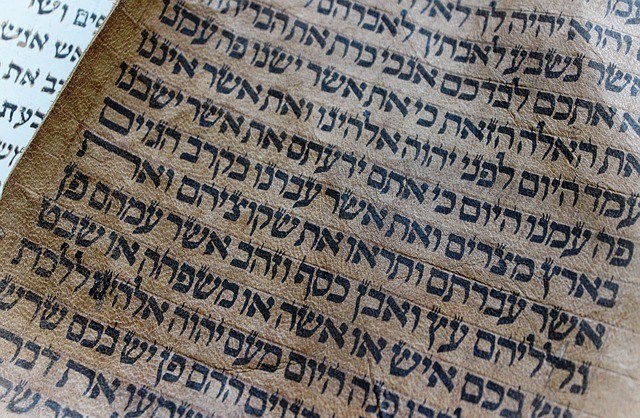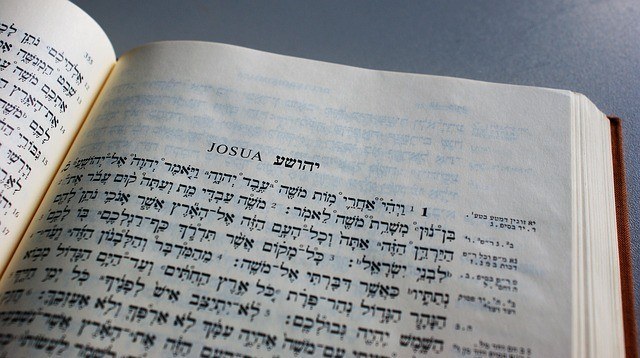
Interested in learning how to translate the sacred text yourself? It’s completely possible, although severely deemed otherwise, for those not wanting to fly to Jerusalem themselves to learn. The history of the language in and of itself is extremely fascinating, and learning it can give you the ability to express yourself in ways you originally couldn’t have. In this article, we will go over the basic history of the Hebrew Bible as well as give you tips to help tackle the new language. Thus, if you want to know how to read the Hebrew Bible in the original language, keep reading.
What Is the Hebrew Bible?
Also known as the Tanakh, the Hebrew Bible consists of 24 stories. These stories tell of Samuel, Ezra-Nehemiah, Chronicles, and Kings as well as covering the twelve minor prophets. These are all considered separate stories and are often referred to as their prominent names.
This book can be divided into 39 books for the protestants to follow after it is broken down and translated. Early Greek and Syriac were used to translate the sacred text as well as Samaritan Pentateuch and Dead Sea Scrolls. Many quotes found from rabbinic manuscripts were also used to round off the resources that were used to translate the book.
The translations used for the book is known to be older than the Masoretic Text and have differences between them. Because of the differences, it is thought that there is another book that may have come before it known as an Urtext and is said to be the source of many versions today.
The original writing system for these books was known as an abjad, which are consonants that were written with many applied vowels. Scholars from the Middle Ages who were known as the Masoretes would later create a system which would be known as Tiberian vocalization and was named after Aaron ben Moses ben Asher at a tiberian school. It was known to have used innovations from other holy works such as the Babylonian Exiles.
Many Orthodox Jews believe all pronunciations and cantillations are derived from the revelations at the Sinai. This is because of how it is known to be impossible to read the sacred texts without using any of the pronunciations and cantillations at all.
Why Should You Read the Hebrew Bible?

In an interview with John Barton [John Barton is Professor Emeritus at the University of Oxford. Some of the books that he authored are: Reading the Old Testament; Oracles of God: Perceptions of Ancient Prophecy in Israel after the Exile; The Nature of Biblical Criticism; The Hebrew Bible: A Critical Companion.] and Kayla Whittle, John tells us that there are a multitude of reasons why we should read the Hebrew Bible.
One of the main reasons is because so many Jews and Christians have been affected by the translations that have reached a high number of people throughout the ages. Barton goes on to explain that western literature itself wouldn’t be understandable or even possible without the Hebrew Bible.
He details how his interest in the Hebrew Bible grew while studying to be ordained in the Church of England. He was drawn to the theological, historical, literary aspects of the Bible and how it inspired many works of various disciplines after its birth. This fascination only deepened when a rabbi told him that “Everything is in it” which later became true in his own experiences.
Barton explains that in content, there isn’t a difference between the Old Testament and The Hebrew Bible. The only real difference is how the two religious groups translate and arrange their beliefs around the texts. For Christians, the book is known as The Old Testament, which comes before the New Testament. The Jewish people simply refer to the book as “The Bible” or “Tanakh,” which is an acronym for the three sections inside the Hebrew Bible.
These sections are known as Torah, Neviim, and Ketuvim. In English, these words translate to Law, Prophets, and Writings. He also tells that the world Hebrew Bible is being more widely used after many believe that the term “Old Testament” could be an anti-Semitic term by calling the Tanakh old. In order to avoid this, Barton advises that people begin to use the word Hebrew Bible instead.
He recommends those that are interested in learning about the book to not start at Genesis since there are other sections of the book that are much better for beginners to pick up on. He suggests starting by learning prose and to start with the stories of Samuel before attempting Genesis. For verses, he believes that a beginning reader would be best covering Psalms, Job, and Lamentations.
When discussing the brutality of sections within the Bible, Barton explains that they were not glossed over for historical religions. It was the nation undergoing these situations and not just the Jewish communities. The God we know in the stories can often seem violent but is the first work to structure religions as Monotheistic. These ideas are what guided kings to rule fairly and generously.
The relevance of the Hebrew Bible is another topic that Barton feels strongly on. He tells of how we are still influenced by many works of the past such as Shakespeare and Dante’s Comedy. He believes that questions asked about God in the Hebrew Bible is something the world hadn’t seen before, and those questions only reached more people as the books became available throughout the ages.

When asked about who decided on what sections would appear in the Hebrew Bible, Barton explains that no one was behind it until after the influence had reached a monumental size. He goes on to explain that we do not know if the works we have now represent the majority of the views from that time period because very few texts have survived. The Hebrew Bible is a collection of information from texts that we have going up to the second century BCE. We know of books that have come in from later ages such as the Book of Enoch and the Book of Jubilees.
Barton explains that we currently do not have a complete transcript for the whole Hebrew Bible before the eleventh century CE. This is also known as the “Leningrad Codex“. The Dead Sea Scrolls do hold a significant amount of stories of the Hebrew Bible, and it is believed that they were written anytime between the fourth century BCE and the third century CE. Though these are the same books, there are many different details that do not stray off from the main story. Because of this, we know that the books were translated and written by scribes, and with the amount of care involved in the process in the second century BCE, we believe the practice may have been adopted years before.
What to Know Before Reading the Hebrew Bible
There are many tips to help your transition into being able to read the Hebrew Bible. These little tips can prohibit you from staying confused about the Bible, and can give you an idea of what you are up for when translating the ancient text.
Hebrew Will Often Times Use Numbers As Letters
This is seen as a way to shorten the amount of space between the numerals and ordinals. We do this in English by having a completely different marking system specifically for our numbers. In Hebrew, this is often done by utilizing a letter from the Aleph-Bet. They do this by making the first nine letters the numerical equivalent of 1 -9. After the 13th letter, they become placeholders for marking values from 10-400. With numbers that go over 1,000, there is another letter they will pair.
The Original Hebrew Bible Was Written Without Vowels
For almost 2,000 years, the written language never featured a single vowel. While consonants were added throughout the years, vowels were not commonplace until the 8th century, and these were in the form of dots and dashes. This form would be used either above or below the word used. Because of this, many schools will offer both “pointed” and “unpointed” forms of writing and reading that differ in vowel usage.
Many claim that the lack of vowel usage in the” unpointed” courses help immerse you in how the original works were written and translated. This is even a cultural norm in Israel, where many forms of text do not feature vowels.
You Need To Practice Consistently
You may seem off-put by how difficult the text can be to translate properly at first. This doesn’t necessarily mean that it will continue to be this way. As you continue to learn your skills in translation will only continue to refine. It is advised to practice daily even if it is for a small amount of time. This can help you retain information and keep your skills moving forward better than studying the Hebrew Bible only once a week.
Writing different phrases can help you recall the information you gain from reading, and will only serve to help your fluency in the subject.
Remember Why You Started
When faced with difficulties, it can seem impossible to continue moving forward. Maybe you began to become uninterested in the topic after not being able to read the text as fluently, or recall the information you read the day before. We are all wired differently, which means that we all have opposite variations to how and why we go after something. Keeping in mind what you wanted to achieve when you started as you face hurdles can give you the motivation to continue learning.
You may have wanted to take a more spiritual path in life, or get connected with a side of the family that speaks a different language. Remember what you wanted your end goal to look like, and tackle the workload in comfortable pieces.
Where Do I Go to Learn?
 The Israel Institute of Biblical Studies is one of the best places to get started. The school’s mission is to make the Bible more accessible to people all over the world. This means they are devoted to helping people understand the stories of both the Old and New Testament more in-depth. They offer numerous courses such as
The Israel Institute of Biblical Studies is one of the best places to get started. The school’s mission is to make the Bible more accessible to people all over the world. This means they are devoted to helping people understand the stories of both the Old and New Testament more in-depth. They offer numerous courses such as
● Yiddish
● Holy Land Studies
● Bible Studies
● Jewish Studies
These courses are led by experts in the field and provide high-quality classes while being supportive of their students’ progress. Many of the teachers you will find on the website have decades of teaching experience under their belt and bring in methods that help beginners overcome the hurdles more efficiently.
Dr. Ohad Cohen is one such example. He himself worked at the Hebrew University of Jerusalem as a Linguistic Researcher. Obtaining both a Master’s and doctoral degree in the subjects, he is one of the most qualified teachers on the site.
The students are able to leave their reviews, and every one of them can be seen praising the teachers for their support and expertise that helped enable them to learn their new skills. The teachers are admired by their students, and the method sees many successful results.
Biblical Hebrew Course
 The Biblical Hebrew Courses will cover five sections that have a multitude of modules in them. Each section will go up in level as you become more fluent. These courses will require a two-hour time commitment each week for nine months. The courses are also accredited by The Hebrew University Of Jerusalem, so you can rest assured that you are getting the best learning experience in your own home. After every nine months, you will move up a level, and see the same amount of time commitment as your first section.
The Biblical Hebrew Courses will cover five sections that have a multitude of modules in them. Each section will go up in level as you become more fluent. These courses will require a two-hour time commitment each week for nine months. The courses are also accredited by The Hebrew University Of Jerusalem, so you can rest assured that you are getting the best learning experience in your own home. After every nine months, you will move up a level, and see the same amount of time commitment as your first section.
Each course can see up to 30 modules that will cover topics such as
● Vowels
● Adjectives
● Pronouns/Nouns
● Adverbs/Verbs
● Literary Analysis
● Self-Expression of Self and Ideas
When you take these courses, you will understand how the Hebrew Bible depicts the history of Israel better, and your knowledge of the culture will strengthen after learning about the origin of many of their principles. By the end of this course, you will be able to read and translate the holy texts by yourself, as well as connect with people that you were unable to before.